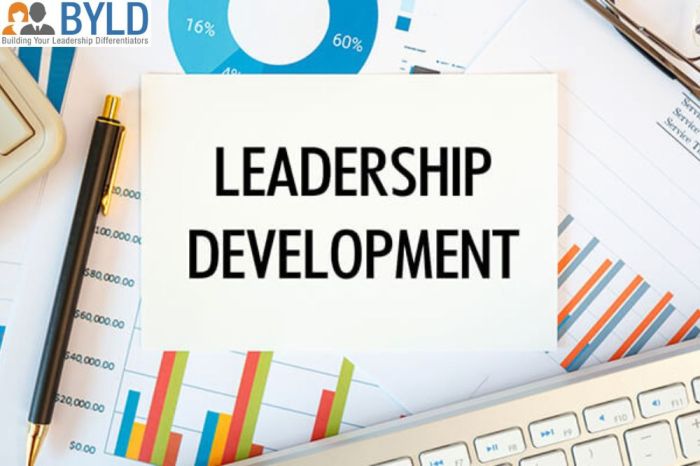Leadership Development sets the stage for the growth and success of individuals and teams, offering a roadmap to unlock potential and drive organizational excellence. Dive into the world of leadership evolution with us.
Overview of Leadership Development
Leadership development involves the process of enhancing the skills, knowledge, and abilities of individuals in leadership roles to help them become more effective in guiding and motivating their teams towards achieving organizational goals.
Leadership development is essential in organizations as it helps in nurturing future leaders, improving employee engagement, fostering innovation, and driving organizational success. By investing in leadership development programs, companies can create a pipeline of competent leaders who can steer the organization through challenges and changes.
Leadership development contributes to the growth of individuals and teams by empowering leaders to communicate effectively, make informed decisions, inspire others, and build strong relationships. It also helps in developing key competencies such as emotional intelligence, strategic thinking, and adaptability, which are crucial for leading in a dynamic and ever-changing business environment.
Key Elements of Effective Leadership Development Programs

Effective leadership development programs encompass several key elements that are essential for nurturing and enhancing leadership skills. These components are crucial in shaping individuals into successful leaders who can inspire and guide others towards achieving common goals.
Mentorship and Coaching
Mentorship and coaching are fundamental aspects of leadership development programs as they provide individuals with personalized guidance and support. Mentors and coaches offer valuable insights, share their experiences, and help individuals navigate challenges, ultimately fostering growth and development.
Feedback and Self-Assessment
Feedback and self-assessment are integral to leadership growth as they enable individuals to identify their strengths, weaknesses, and areas for improvement. Constructive feedback from peers, mentors, and supervisors helps individuals gain valuable insights and adapt their leadership style accordingly. Self-assessment encourages introspection and continuous learning, leading to personal and professional development.
Strategies for Implementing Leadership Development Initiatives

Implementing effective leadership development initiatives requires careful planning and execution to ensure the growth and success of future leaders within an organization. Here are some strategies to consider:
Designing and Launching Leadership Development Programs
Creating a well-rounded leadership development program involves assessing the current skill sets and potential of employees, establishing clear goals and objectives, and selecting appropriate training methods. It is essential to tailor the program to the specific needs and culture of the organization to maximize its impact.
Identifying and Nurturing Future Leaders, Leadership Development
One approach to identifying future leaders is through talent assessments and performance evaluations to pinpoint individuals with high potential. Nurturing these individuals can involve mentorship programs, stretch assignments, and leadership training to develop their skills and prepare them for future roles.
Integrating Leadership Development into Company Culture
To integrate leadership development effectively into the company culture, it is crucial to have leadership buy-in and support at all levels. Encouraging a culture of continuous learning and development, providing opportunities for feedback and growth, and aligning leadership development initiatives with organizational goals can help embed leadership development into the fabric of the company.
Measuring the Impact of Leadership Development
Effective leadership development programs require proper evaluation to gauge their impact on organizational success. By utilizing specific metrics and key performance indicators, companies can assess the effectiveness of their leadership initiatives.
Metrics and Key Performance Indicators
Measuring the impact of leadership development involves tracking various metrics and key performance indicators. Some common metrics include:
- Employee Engagement Levels
- Retention Rates of Leaders
- Succession Planning Effectiveness
Long-term Benefits of Investing in Leadership Development
Investing in leadership development programs can yield long-term benefits for organizations. Some of these benefits include:
- Improved Employee Morale
- Enhanced Organizational Performance
- Increased Innovation and Creativity
Successful Leadership Development Stories and Outcomes
Several organizations have seen remarkable outcomes from their leadership development initiatives. One such example is Company X, which implemented a comprehensive leadership program resulting in:
a significant increase in employee retention rates, a boost in overall productivity, and a positive shift in company culture.





